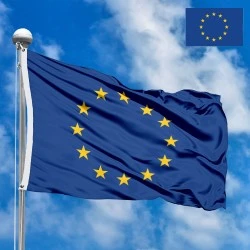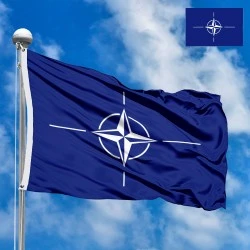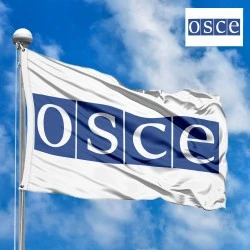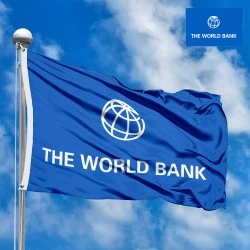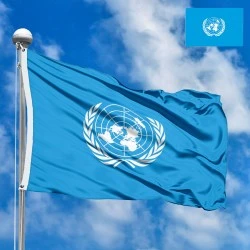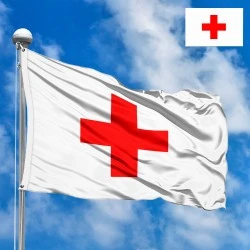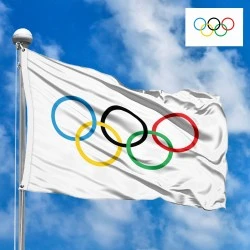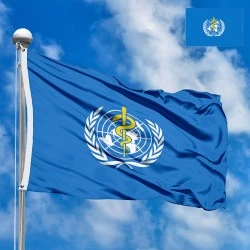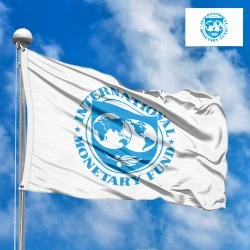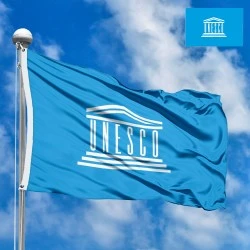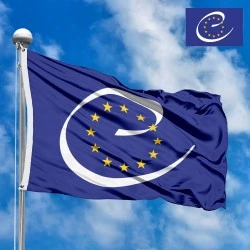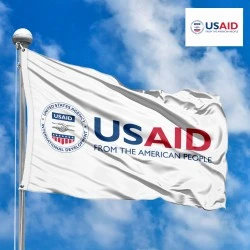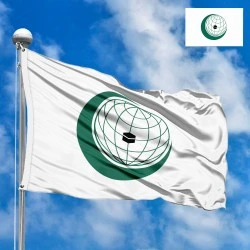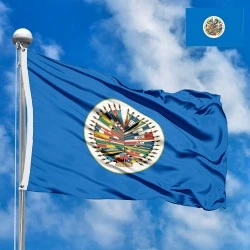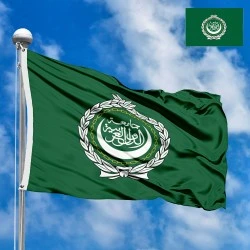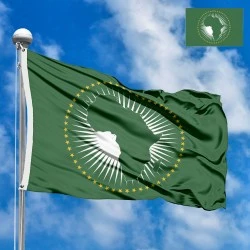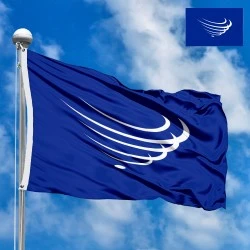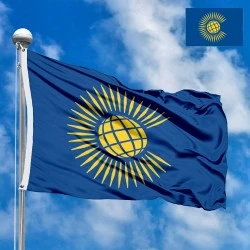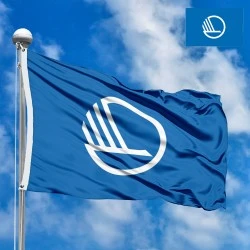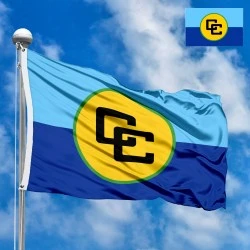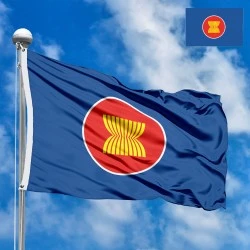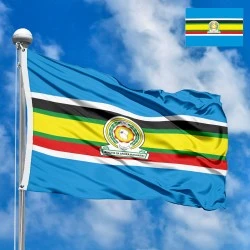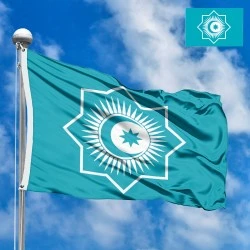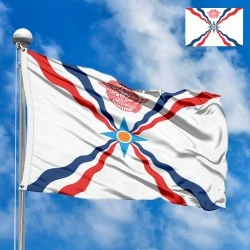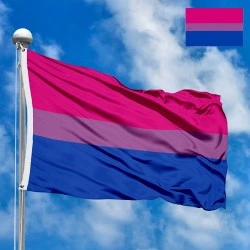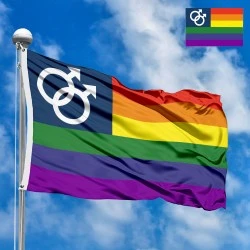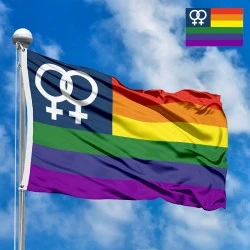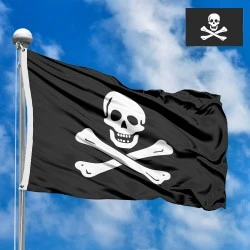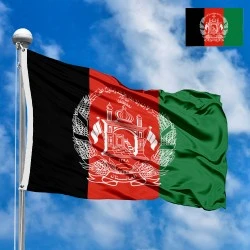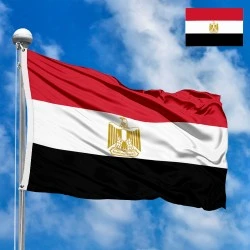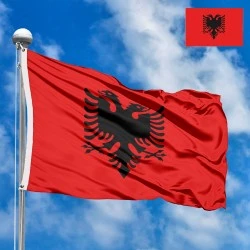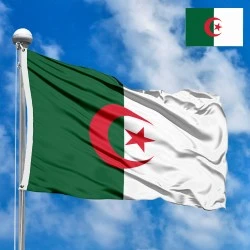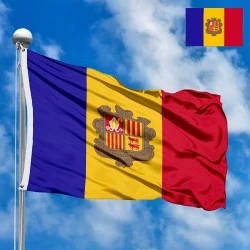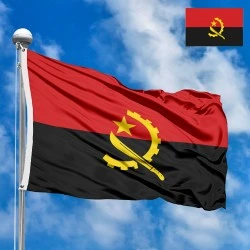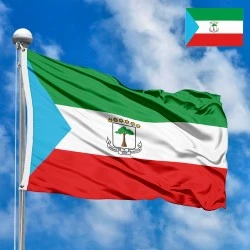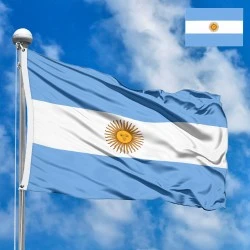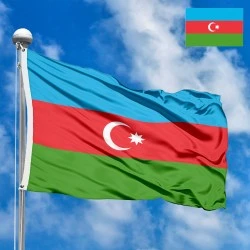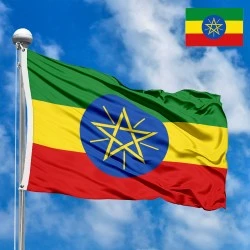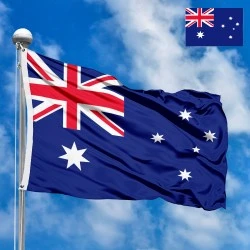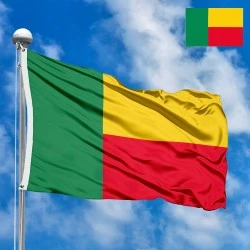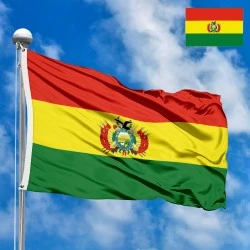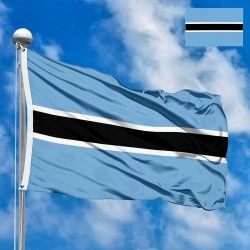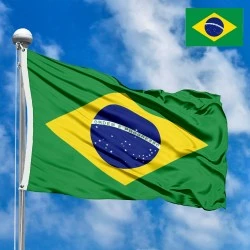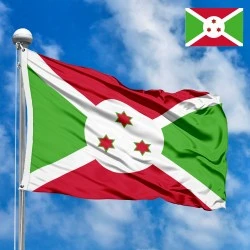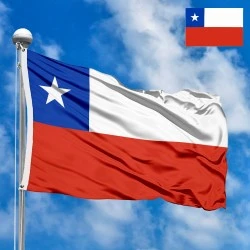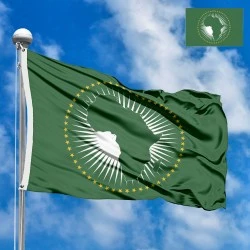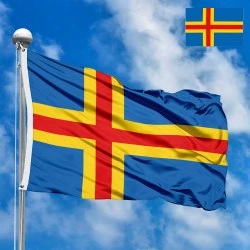Flag of the Pacific Community
- Flag Type: International organizations
- Proportions (official): 2:3
- Official name: Pacific Community
- Capital: Nouméa, New Caledonia (Headquarters)
- Currency: CFP Franc (XPF, ₣)
- Languages: English, French, Fijian
- National domain: .int
Flag Information
General information
Economy and communications
- All Flags
- Flags of Countries by Continent
-
Flags of Organizations
- Flags of UN countries
- Flags of the European Union countries
- Flags of NATO countries
- Flags of the countries of the Organization of Islamic Cooperation
- Flags of the countries of the Organization of American States
- Flags of the Arab League countries
- Flags of the African Union countries
- Flags of the countries of the Union of South American Nations
- Flags of the Commonwealth of Nations
- Flags of the countries of the Secretariat of the Pacific Community
- Flags of the Nordic Council countries
- Flags of the Caribbean Community
- Flags of the countries of the Association of Southeast Asian Nations
- Flags of the East African Community
- Flags of the countries of the Organization of Turkic States
- LGBT Community Flags
- Historical Flags
- Ethnic Flags
- Flags of the USA (states)
Description
The flag of the Pacific Community (SPC) is a modern and compelling symbol that embodies the cooperation and shared aspirations of the diverse nations and territories of the Pacific Islands. It represents a commitment to sustainable development, regional solidarity, and the preservation of the unique cultural and natural heritage of the Pacific. The flag's design is rich with symbolism, each element carefully chosen to reflect the core values and mission of the organization.
Design and Symbolism
The modern flag features a circle of stars, with one star for each member of the organization, completed by an arc.
-
Circle of Stars: There is one star for each member of the organization. The dark blue field and white stars are meant to reflect the clear night sky of the Pacific Ocean.
-
Arc: The arc symbolizes the Secretariat, which unites the countries.
-
Central Emblem: Inside the circle is an emblem composed of a sail, the ocean, and a palm tree. The sail and the ocean symbolize connection and exchange, while the sail itself is a canoe, symbolizing movement and change. The palm tree symbolizes wealth.
-
Colors: The turquoise sail, arc, and bottom wave symbolize the youth and island chains of the region. The dark blue field and white stars reflect the clear night sky of the Pacific Ocean.
History of Creation and Adoption
The Pacific Community (SPC) was founded in 1947 as the South Pacific Commission, but its flag was adopted much later. The current flag was officially approved and adopted in 1999, following the organization's name change from the South Pacific Commission to the Pacific Community. This change reflected a broader membership that included both the "south" and "north" of the Pacific Ocean, as well as a more modern, holistic approach to regional cooperation. The creation of the flag was a deliberate effort to establish a new, unifying visual identity for the SPC, a symbol that would resonate with all its members and reflect its updated mission.
Countries and Territories of the Region
The Pacific Community is comprised of 26 members, including 22 Pacific Island countries and territories and four of its founding countries. The member countries and territories are: American Samoa, Australia, Cook Islands, Federated States of Micronesia, Fiji, France, French Polynesia, Guam, Kiribati, Marshall Islands, Nauru, New Caledonia, New Zealand, Niue, Northern Mariana Islands, Palau, Papua New Guinea, Pitcairn Islands, Samoa, Solomon Islands, Tokelau, Tonga, Tuvalu, United Kingdom, United States of America, and Vanuatu. This diverse membership underscores the organization's role in addressing a wide range of issues, from climate change to human rights, across a vast geographical area.
Meaning for Inhabitants
For the people of the Pacific, the flag of the SPC is more than just a symbol of a political organization. It represents their shared heritage, collective future, and a commitment to protecting their unique way of life. The canoe on the flag is a powerful cultural symbol, a reminder of their ancestors who were master navigators and explorers. It speaks to the spirit of resilience and adaptability that defines the Pacific peoples. The flag's presence at regional meetings and events fosters a sense of shared purpose and solidarity, reminding citizens that they are part of a larger community working together to address common challenges like climate change, economic development, and health issues. It is a symbol of hope and empowerment, showcasing the collective strength and voice of the Pacific region on the global stage.
Interesting Facts
-
The Pacific Community is the oldest and largest scientific and technical development organization in the Pacific region.
-
The outrigger canoe on the flag is a powerful cultural symbol found throughout the Pacific Islands, representing migration, trade, and the mastery of the sea.
-
The official name change to the "Pacific Community" in 1999 and the adoption of the new flag were part of a broader reform process to make the organization more responsive to the needs of its members.
-
The flag is an integral part of the organization's branding and is featured prominently at its two main offices in Nouméa, New Caledonia, and Suva, Fiji.
-
The flag is an exception to many regional flags as it features a single star rather than a collection of stars, emphasizing the single, unified goal of the organization.
In the demonstration images, full-size flags are shown with proportions of 2:3, and hand-held flags with proportions of 1:2.
Donation
Download
Completely free for commercial and non-commercial use (public domain).
You can freely use them in your news magazines, websites, software, mobile applications.
We appreciate a backlink to https://flagssite.com
Raster files - Flag of the Pacific Community (PNG, JPG)
 Waving flag
Waving flag
- PNG format (transparent background), 72dpi, dimensions in Pixels (px), aspect ratio 3:4.
- 15х20 px
- 30х40 px
- 60х80 px
- 120x160 px
- 240x320 px
 Sizes:
Sizes:
"v15" - image size (by height); if necessary, replace with available: v15, v30, v60, v120, v240.
!!! For resizing, use the Latin (eng) keyboard layout.
<img src="https://flagssite.com/flags/v15/20821.png" alt="Flag of the Pacific Community">
 Round flag
Round flag
- PNG format (transparent background), 72dpi, dimensions in Pixels (px), aspect ratio 1:1.
"d15" - image size (diameter); if necessary, replace with available: d15, d30, d60, d120, d240.
!!! For resizing, use the Latin (eng) keyboard layout.
<img src="https://flagssite.com/flags/d15/20821.png" alt="Flag of the Pacific Community">
 Rectangular flag 2:3
Rectangular flag 2:3
- JPG format, 72dpi, dimensions in Pixels (px), aspect ratio 2:3.
"h30" - image size (by height); if necessary, replace with available: h15, h30, h60, h120, h240, h360, h480.
!!! For resizing, use the Latin (eng) keyboard layout.
<img src="https://flagssite.com/flags/h30/20821.jpg" alt="Flag of the Pacific Community">


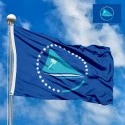



 Sizes:
Sizes:
 Sizes:
Sizes:
